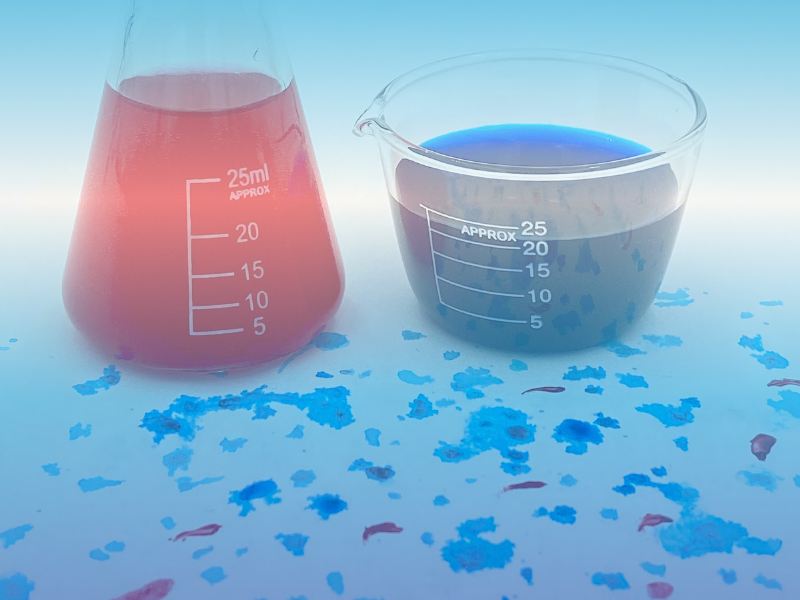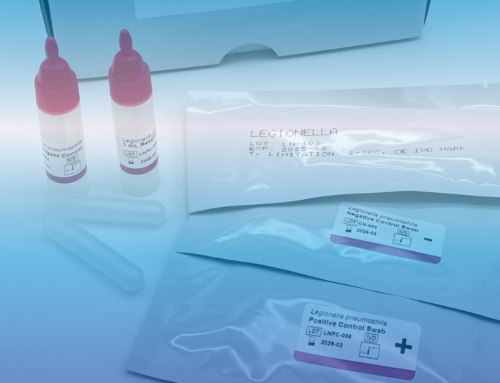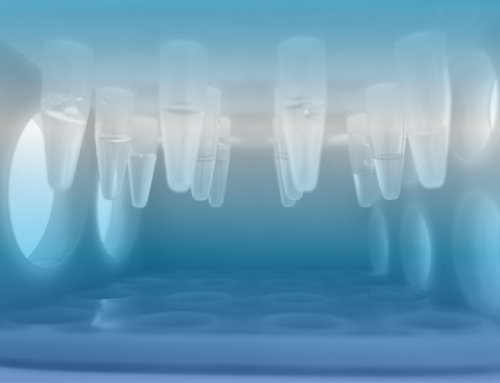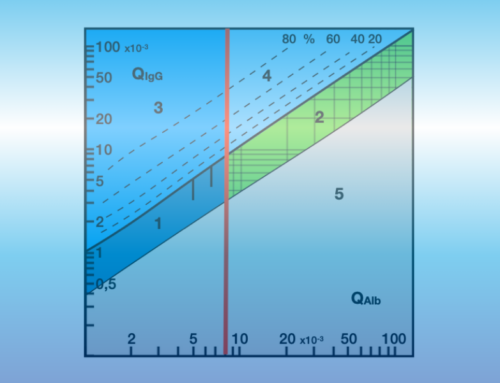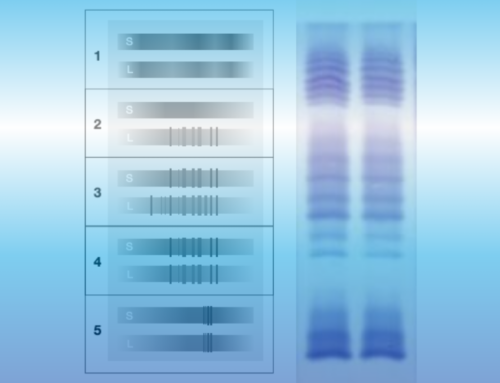Acid Fast Bacteria Staining: Kinyoun vs Fluorescence vs Ziehl-Neelsen
Acid Fast Bacteria staining methods are specialized techniques to stain acid-fast bacteria – “acid-fast bacilli” (AFB). Among these are Kinyoun staining, AFB fluorescence staining, and Ziehl-Neelsen staining [1].
These staining methods aim to detect acid-fast bacteria, in particular mycobacteria, by enabling color differentiation between acid-fast and non-acid-fast bacteria. The acid-fast cell wall of these gram-positive bacteria consists of mycolic acids. Once stained, acid-fast bacteria cannot be decolorized by acids due to their specific cell wall structure [2].
Acid Fast Bacteria Staining: Detection of Tuberculosis, Leprosy, and More
Acid Fast Bacteria stains are mainly used to detect Mycobacterium tuberculosis, the causative agent of tuberculosis (TB), Mycobacterium leprae, the pathogen that causes leprosy, as well as atypical mycobacteria [3].
Tuberculosis (TB) is an infectious disease caused by bacteria from the Mycobacterium tuberculosis complex. This group includes Mycobacterium tuberculosis, the main cause of tuberculosis in humans, as well as M. bovis and less pathogenic strains such as M. microti, M. africanum, and M. canetti [3]. According to the World Health Organization (WHO), approximately one-quarter of the world’s population is infected with M. tuberculosis. Of these, around five percent develop tuberculosis. Every year, around 1.4 million people die from TB [4].
Acid-Fast Bacteria Microscopy plays a crucial role in the diagnosis of pulmonary tuberculosis, especially in low-income countries, as it is faster and cheaper than PCR tests. Given the ongoing spread of the disease, AFB staining remains a reliable diagnostic tool [2].
In addition to M. tuberculosis, AFB staining methods can also detect atypical acid-fast, non-tuberculous mycobacteria (NTM). These bacteria are widespread in the environment (e.g., in soil and water) and cause so-called “atypical mycobacteriosis”, which can affect the lungs, skin, and lymph nodes [5]. Members of this group are Mycobacterium avium, M. kansasii, and M. xenopi [4].
Acid Fast Bacteria Staining: The Ziehl-Neelsen Staining Method
The method is named after the German bacteriologist Franz H. Ziehl (1857-1926) and the pathologist Friedrich Carl Adolf Neelsen (1854-1894). Ziehl was a professor in Lübeck and developed a carbol fuchsin stain in 1882 for the detection of acid-fast bacteria, building on the work of the bacteriologist and serologist Paul Ehrlich [6].
Neelsen was a professor at the Institute of Pathology at the University of Rostock and later became chief physician of the Institute of Pathology at the University of Dresden. Neelsen died at the age of 40 as a result of his research on dangerous bacteria. Together, the two professors developed the Ziehl-Neelsen staining method. Neelsen combined Ziehl’s staining with a specific heating process and introduced the decolorization and counterstaining steps [7].
The first step in Ziehl-Neelsen staining is to fix a smear of the material to be examined (e.g., sputum, bronchial secretions, effusion fluids, or urine) on a microscope slide [3]. The sample is then covered with carbol fuchsin (an intense red dye) and heated to just below the boiling point. The heating process is repeated three times, as it facilitates the penetration of the dye into the lipid-rich cell wall.
After a cooling phase, the sample is rinsed with tap water. The sample is then decolorized with an ethanol solution containing 3% hydrochloric acid. During this step, the dye is removed from all non-acid-fast structures. However, acid-fast bacteria retain the red coloration as their cell walls strongly bind the dye. Finally, the counter-staining with methylene blue is applied to make the decolorized structures visible. The analysis is performed using a light microscope, where acid-fast bacteria appear red, while all other structures appear blue. In addition to the colors, the morphology of the bacteria can also be assessed under the microscope [8].
The Ziehl-Neelsen staining method has a sensitivity of 70% and a specificity of 97,1% for pulmonary tuberculosis [9]. It can also be used to confirm positive results from auramine staining (AFB Fluorescence). A key advantage of this combination is that results are available within a few hours [3].
Acid Fast Bacteria Staining: The Kinyoun Staining Method
Joseph J. Kinyoun (1860-1919), a US-American doctor, developed the Kinyoun stain. He was the founder and first director of the US Hygiene Laboratory on Staten Island, which later became the National Institute of Health (NIH). Kinyoun played a significant role in combating infectious diseases such as cholera in the USA [10].
The Kinyoun staining method is similar to the Ziehl-Neelsen method but does not require heating. For this reason, it is referred to as the “cold method”. The sample is also covered with carbol fuchsin, but staining occurs at room temperature [2]. The decolorization and counterstaining steps are the same as those used in the Ziehl-Neelsen method.
Acid Fast Bacteria Staining: The Fluorescence Staining Method
The “acid-fast bacilli” fluorescence staining is another method for detecting acid-fast bacteria. This method employs a fluorescent dye such as auramine-O or a combination of auramine and rhodamine. The sample is first covered with the fluorescent dye, and after the dye has been absorbed, it is rinsed with water [2].
Heating the sample is not required in fluorescence staining. However, the exposure time is longer. The sample must remain in contact with the dye for at least 20 minutes to penetrate the bacteria. As with the previously mentioned staining methods, fluorescent staining also involves decolorization. As a second step, counterstaining is carried out with a potassium permanganate solution, which reduces the background fluorescence [2].
Acid-fast bacteria, therefore, appear as yellow-green fluorescent structures, while all other components can be clearly distinguished during analysis as they do not show any fluorescence [2]. The combination of auramine and rhodamine offers the advantage of stronger fluorescence, making acid-fast bacteria easier to detect.
Acid Fast Bacteria Staining: Differences Between the Staining Methods
The staining methods by Kinyoun and Ziehl-Neelsen both use carbol fuchsin as a dye. Nevertheless, the two techniques differ in their procedures: the Ziehl-Neelsen staining method involves heating the sample, while the Kinyoun method is carried out as a “cold staining” technique.
In contrast, the fluorescence staining method uses fluorescent dyes, either auramine or a combination of auramine and rhodamine, instead of carbol fuchsin.
Ziehl-Neelsen and Kinyoun stains are analyzed using a light microscope, while fluorescence stains require a fluorescence microscope.
Acid Fast Bacteria Staining: Duration and Sensitivity of the Staining Methods
A study compared the Ziehl-Neelsen staining method with the fluorescence staining. Both were found to be reliable and consistent. A remarkable feature of fluorescence microscopy, however, is that it delivers positive results even at low bacterial concentrations. This indicates a higher sensitivity of the staining method compared to other techniques [11].
Overall, the Ziehl-Neelsen, Kinyoun, and fluorescence staining methods require only a few hours from sampling to result evaluation. The fluorescence method is the fastest of all three methods, as it requires only half as much time to evaluate specimens as the other two AFB techniques [12].
Acid Fast Bacteria Staining: Summary
Acid-fast microscopy alone is not sufficient to prove a TB infection beyond doubt, as it only indicates the presence of mycobacteria. Since mycobacterial cultures take weeks to yield results, the faster MTB-PCR method enables timely therapy. On the other hand, microscopy continues to be used for therapy control and cure monitoring [3].
Strict safety measures must be maintained in the laboratory, including restricted access and processing of samples in a class 2 safety cabinet to avoid infection. The results are evaluated and reported according to the guidelines of the GLI Handbook on Acid-fast Microscopy and the standards of the WHO and the International Union Against Tuberculosis and Lung Disease [13].
Acid Fast Bacteria Staining: BIOMED Products
Staining solutions and staining machines for AFB staining can be found in BIOMED’s product portfolio.
The versatile staining machines from the Dagatron series are particularly suitable for carrying out all three AFB staining methods: Ziehl-Neelsen, Kinyoun and for AFB fluorescence staining.
Ready-to-use staining solutions are available for Ziehl-Neelsen and Kinyoun staining, which are optimally adapted to both methods.
These include Ziehl-Neelsen/Kinyoun Methylene Blue in combination with Ziehl-Neelsen/Kinyoun Carbol-Fuchsin and Ziehl-Neelsen/Kinyoun Acid Alcohol.
For AFB fluorescence staining, BIOMED offers the AFB staining solutions Acid Alcohol AFB Fluorescence, Potassium Permanganate AFB Fluorescence and Auramine or Auramine-Rhodamine AFB Fluorescence.
All AFB staining solutions mentioned can be used with fully automatic staining machines, e.g. from the Dagatron series, or for manual staining.
List of references:
- Doan, C. (n.d.). Spezialfärbungen – Welche, warum und wie? Teil 3: Bakterien, Pilze und andere Mikroorganismen. Leica Biosystems. https://www.leicabiosystems.com/de-de/knowledge-pathway/special-stains-which-one-why-and-how-part-iii-microorganisms-bacteria-and-fungi/
- Bayot, M. L., Mirza, T. M., & Sharma, S. (2023). Acid fast bacteria. In StatPearls. StatPearls Publishing. https://www.ncbi.nlm.nih.gov/books/NBK537121/
- Gesundheitsportal. (2020). ZN-Färbung. Gesundheitsportal. https://www.gesundheit.gv.at/labor/laborwerte/infektionen-bakterien/labor-ziehl-neelsen-faerbung-ausstrich-zzna1.html
- World Health Organization. (2024). Global tuberculosis report 2024. https://iris.who.int/bitstream/handle/10665/379339/9789240101531-eng.pdf?sequence=1
- Fille, M. (2018). Atypische Mykobakteriosen: Was verstehen wir darunter und warum erkranken wir? Universimed. https://www.universimed.com/ch/article/pneumologie/atypische-mykobakteriosen-was-verstehen-wir-darunter-und-warum-erkranken-wir-2117811
- Wikipedia contributors. (2024). Franz Ziehl. In Wikipedia. https://de.wikipedia.org/wiki/Franz_Ziehl#cite_ref-1
- Wikipedia contributors. (2023). Friedrich Neelsen. In Wikipedia. https://en.wikipedia.org/wiki/Friedrich_Neelsen
- Reckort, S., & Blaschke, J. (2024). Ziehl-Neelsen-Färbung. DocCheck Flexikon. https://flexikon.doccheck.com/de/Ziehl-Neelsen-Färbung
- Abdelaziz, M. M., Bakr, W. M. K., Hussien, S. M., & Amine, A. E. K. (2016). Diagnosis of pulmonary tuberculosis using GeneXpert MTB/RIF assay. European Journal of Public Health, 26(2), 168–172. https://doi.org/10.1093/eurpub/ckv234
- Wikipedia contributors. (2022). Joseph J. Kinyoun. In Wikipedia. https://de.wikipedia.org/wiki/Joseph_J._Kinyoun
- Dzodanu, E. G., Afrifa, J., Acheampong, D. O., & Dadzie, I. (2019). Diagnostic yield of fluorescence and Ziehl-Neelsen staining techniques in the diagnosis of pulmonary tuberculosis: A comparative study in a district health facility. Tuberculosis Research and Treatment, 2019, Article 4091937. https://doi.org/10.1155/2019/4091937
- World Health Organization. (2011). Fluorescent light-emitting diode (LED) microscopy for diagnosis of tuberculosis: Policy statement. World Health Organization. https://iris.who.int/bitstream/handle/10665/44602/9789241501613_eng.pdf
- Lumb, R., Van Deun, A., Bastian, I., & Fitz-Gerald, M. (2013). Laboratory diagnosis of tuberculosis by sputum microscopy: The handbook. SA Pathology. https://www.stoptb.org/sites/default/files/imported/document/TB_MICROSCOPY_HANDBOOK_FINAL.pdf

